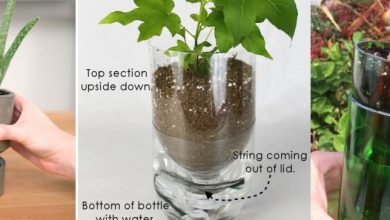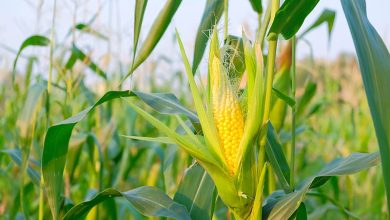Crop Rotation in the garden: What is it and what benefits does it have?

In this article we will talk about one of the most used techniques in organic gardens: crop rotation. We will see what it consists of, what its benefits are, the steps to plan crop rotation in the garden for successive years and some examples of rotations.
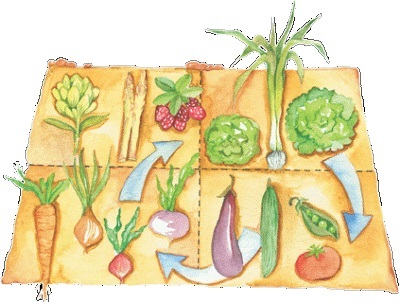
☝ What is crop rotation?
Crop rotation is a traditional agricultural technique that consists of alternating different crops on the same soil over time. That is, in each fraction of land, terrace or container, a different type of crop is planted each season.
Like the association of crops, rotation is a typical ecological practice that is very beneficial for the orchard and for the crops. That is why you should take it into account when planning the organic garden.
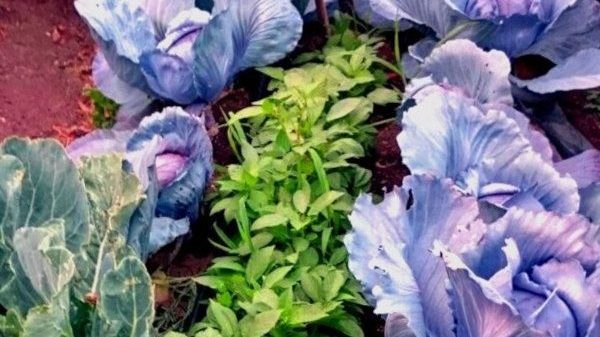
For centuries, rotation and association have been the basis of traditional agriculture, especially in Europe, but the predominant intensive agriculture in recent decades has been leaving it aside and replacing it with solutions that only solve problems or cover short-term deficiencies. term, such as the use of insecticides or artificial soluble fertilizers. Even so, the way you cultivate your orchard or garden depends only on you, so it is up to you to consider good ecological practices like this one.
Objective of crop rotation
The objective of crop rotation is to maintain biodiversity (different species of plants, insects…) to take advantage of the differences that crops have in the rate of absorption of nutrients from the substrate. Although they all require more or less the same nutrients to grow and develop, they do not always need the same amount.
For example, if we always put a very demanding vegetable in the same container (with very high nutrient requirements or a specific nutrient), the substrate will be «exhausted» and we will have to fertilize much more than if we only leave it in that container. one year and the following year we exchanged it for another undemanding plant that we had in the garden. In this way we manage to compensate for the gradual loss of soil fertility.
✅ Benefits and Importance of crop rotation in the garden
There are many benefits of crop rotation. One of them is the improvement of plant nutrition. As the orchard needs less fertilizer, we will also use less time, effort and money in the task of fertilizing it.
Plant nutrition is better (more balanced in the medium-long term and with fewer nutrient deficiencies) so plants grow stronger and more vigorous: they produce more and have greater natural resistance to pests and diseases. In addition, we avoid that if a pest or disease has already attacked a crop, it «settles down» and consolidates in that area for the rest of the seasons: if we change the plant, it will most likely disappear because it does not «like» its new environment.
Another benefit of crop rotation is the increase in biodiversity, something very positive for both the soil and the crops. The variety of species favors the balance of the orchard and the reduction of weeds, among other things.
Rotating crops improves humus reserves in the soil (since we alternate plants that deplete the land with others that provide more organic matter than they use up) so that a more «alive and healthy» soil is achieved and activity is stimulated of the beneficial microorganisms that live in the substrate.
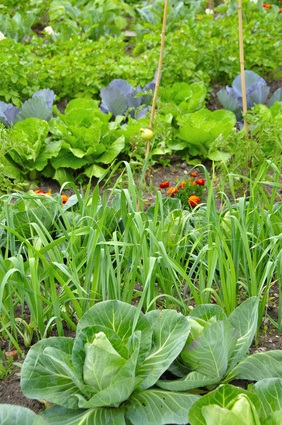
✍ How to design successions or crop rotations in the orchard
The guidelines for planning rotation are simple. First of all you will have to think about the duration of the rotation (three or four years is a suitable duration for a garden rotation). Then you will have to make the groups of plants – now we will see how – and divide the garden into as many parts as there are groups.
There may be a group of «fixed» plants that will not be part of the rotation, so the space they occupy will not be taken into account in the planning because they will never be moved. This group of fixed crops can be flowers, for example, or neutral crops -with very little influence on soil fertility- or with a growth rate that is very different from that of the rest of the plants (such as asparagus or rhubarb, which are perennials).
Without taking into account this group of fixed crops, which will have their own place, if the rotation is four years, for example, the orchard will have to be divided into four parts and the plants grouped into four groups. In each of the four parts a group of plants will be cultivated and every year each group will be moved to the next plot, so that the groups will take four years to repeat the area.
Crop groups to plan rotation
We can take into account several characteristics when classifying the plants in our garden into groups. The more aspects that are taken into account (even if you have to «waste» a little time for this) the better the rotation will be. I leave you some classifications recommended by the authors of the books «Ecological agriculture» and «Sustainable urban garden» (both from the Mundi-Prensa publishing house):
1. Type of use
- Root: garlic, onion, turnip, leek, potato, radish, beet, carrot…
- Fruit (or flower, or stem): aubergine, courgette, melon, watermelon, cucumber, pepper, tomato… (artichoke, cauliflower, broccoli and thistle)
- Leaf or stem: Swiss chard, celery, cabbage, escarole, spinach, lettuce, cabbage, arugula…
- Seeds: legumes, corn, sunflower…
If we choose this type of rotation, we could first put a root vegetable in a sector of the terrace, which will be followed by a leafy plant. The third year a legume (very important in crop rotations because it improves the levels of nitrogen and organic matter in the soil) will arrive there, and after this, a crop that has higher requirements, such as a fruit vegetable or a “voracious” plant (potato, corn…).
2. Crop Family
- Compound: artichoke, thistle, endive, escarole, sunflower, lettuce…
- Cruciferous: collard greens, broccoli, cabbage, cauliflower, red cabbage, cabbage, turnip, radish..
- Cucurbitaceae: courgette, pumpkin, melon, cucumber, watermelon…
- Grasses: corn, wheat, rye, barley, oats..
- Legumes: broad bean, green beans, chickpeas, peas, lentils, soybeans…
- Liliaceae: garlic, onion, leek, asparagus..
- Umbelliferae: celery, parsnip, fennel, parsley, carrot…
- Solanaceae: aubergine, sweet potato, potato, pepper, tomato…
- Chenopodiaceae: chard, spinach, beet…
A possible four-year rotation would be:
- 1º Legumes and Cruciferae.
- 2º Compositae, Chenopodiaceae and Cucurbitaceae.
- 3º Umbelliferae and Liliaceae.
- 4th Solanaceae
3. Nutrient requirements and contributions
- 1st. Demanding vegetables: chard, broccoli, pumpkin, cabbage, corn, potato and plants with larger fruits such as cucurbits and nightshades.
- 2nd. Legumes that help recover the soil.
- 3rd and 4th. Undemanding vegetables (so that the soil continues to regenerate): garlic, onion, lettuce, turnip, leek, beet, carrot…
Or also:
- 1º Legumes that prepare a very fertile substrate.
- 2º Cruciferous and other more demanding crops
- 3º Liliaceae (which should not be placed after legumes) and less demanding crops
- 4º Roots and tubers
✅ Examples of Crop Rotation in the Garden
In this image you can see a scheme of a rectangular terrace that we have divided into 4 sections and where we are going to plan the crop rotation.
During the first season, in each of the divisions we will grow a type of vegetable (fruit, leaf, root or a legume).
In the following season (autumn, in our rotation example, but it can also be the following year) we will change the section crops so that in the place where there were demanding vegetables (such as nightshades or other fruit vegetables) we will plant other less demanding ones., like those of leaf; and where there were crops that enriched the soil, such as legumes, the following year we will plant more demanding plants with larger fruits, such as cucurbits or nightshades.
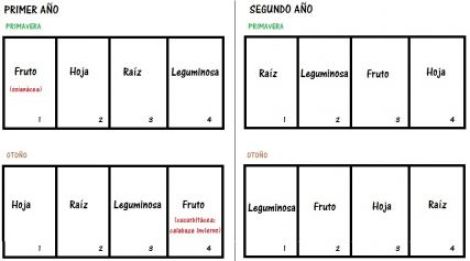
I hope that this post will help you to plan the rotations in the orchard! You can leave all your contributions, doubts and examples of crop rotation in the comment thread below.
Greetings and good luck with the garden!
References
- Casanovas, EM et al., 1995. Soil organic matter under crop rotations. Soil Science, Vol. 13, p. 16-20.
- Kolnabs, E. & Vásquez, D., 1999. Organic Farming Manual. Organic Agriculture Group of the Cuban Association of Agricultural and Forestry Technicians (ACTAF).
- Espinoza, Y. et al., 2007. Effect of crop rotation and tillage practices on soil organic matter fractions. Interscience, vol. 32, no. 8, p. 554-559.
- Vásquez Palma, C. et al., 2012. Organic management of horticultural crops. Chapter 6 of the Guide “Organic fruit and vegetable production ”. Ed. Agricultural Research Institute, Chile.

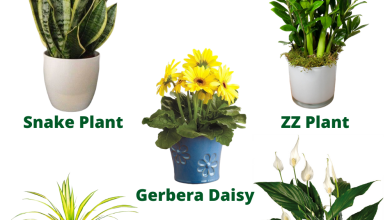
![Photo of Kiwi cuttings: [Grafting, Season, Rooting and Sowing]](https://www.complete-gardening.com/wp-content/uploads/2021/06/Esquejes-de-Kiwi-390x220.jpg)
